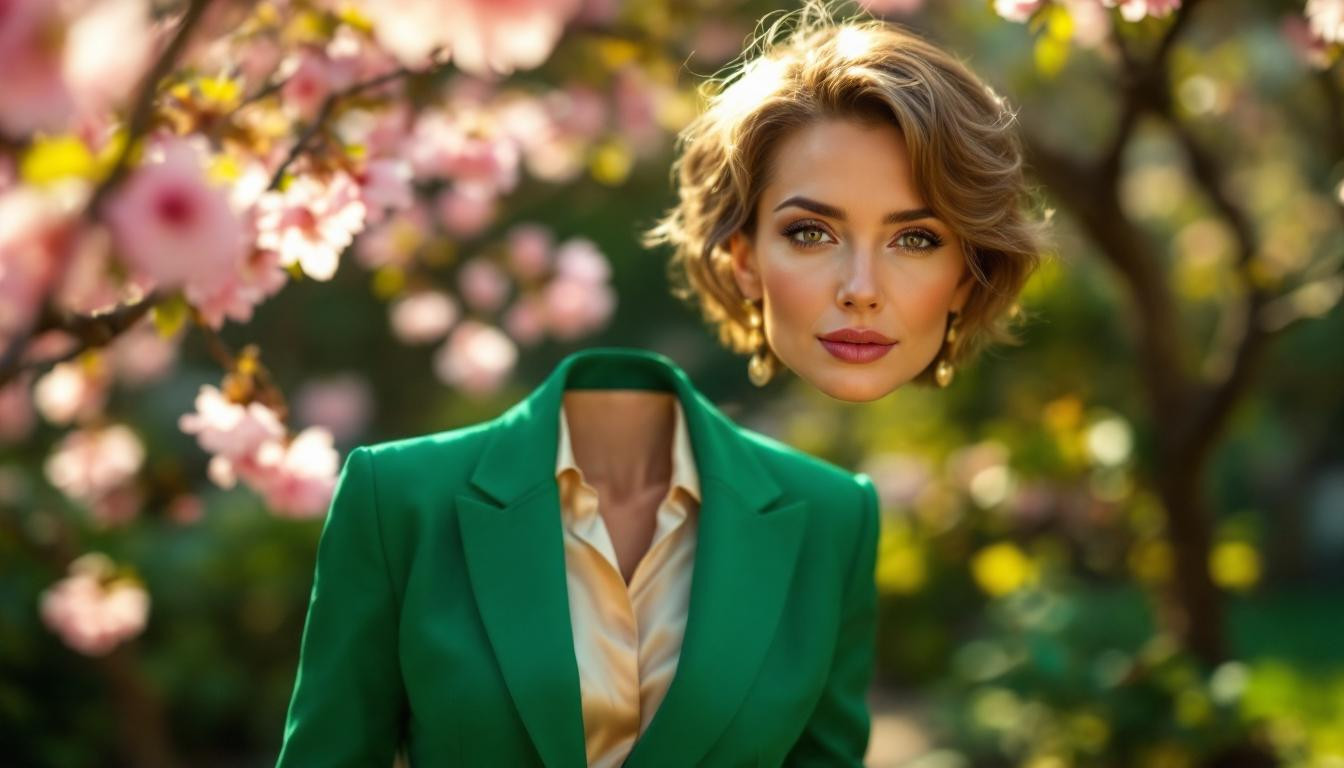Spring is in full bloom, bringing with it the perfect opportunity to revitalize your wardrobe. But did you know that some color choices might be secretly adding years to your appearance? As we mature, our complexion changes, and certain hues can either enhance or diminish our natural radiance. Let’s explore the top five colors that might be aging you past 50 and discover what to wear instead this spring.
The unexpected impact of color on aging
Color isn’t just about fashion—it’s about how we present ourselves to the world. Lisa Montgomery, renowned fashion stylist, explains: “Color is one of the most powerful tools in your style arsenal—it can either enhance your natural glow or draw attention to signs of aging.”
As we move through our 50s and beyond, our skin loses some of its natural contrast and vibrancy. The colors we wore effortlessly in our 30s and 40s might now be working against us, creating shadows where we want light.
Jet black: The slimming shade that can betray you
While black is universally known for its slimming effect, it can create harsh shadows on mature skin, emphasizing fine lines and under-eye circles. Instead of stark black, try navy blue or deep charcoal for a softer, more flattering alternative.
“I see so many women hiding in unflattering neutrals thinking they’re playing it safe, when actually they’re aging themselves by at least five years,” notes Dr. Emma Wilson, color psychologist and author.
Pale pastels: The subtle color trap
Those soft Easter egg hues that seem so delicate can actually blend into fair skin, making it appear dull and tired. The effect is like watercolors bleeding into paper—your natural features lose definition rather than gaining it.
One client shared: “After years of wearing lavender and baby blue, I switched to richer jewel tones and immediately received compliments on how refreshed I looked—as if I’d been on vacation!”
Fire-engine red: Too bold for comfort
Vibrant red can clash with the natural redness that occurs in maturing skin, making complexions appear inflamed or uneven. Instead, consider these alternatives:
- Burgundy or bordeaux for a sophisticated take on red
- Coral or salmon for a softer warm tone
- Ruby with blue undertones for a more flattering effect
Autumnal oranges and yellows: The seasonal mismatch
Colors like mustard yellow and pumpkin orange can accentuate yellowing that sometimes appears in aging skin. What once looked earthy and natural may now make you appear tired rather than timeless.
“Avoiding ashy grays, stark whites, and unflattering pastels while embracing rich jewel tones and warm neutrals will create a wardrobe that keeps you looking vibrant and confident for years to come,” advises Ayesha from Ayesha’s Elegance boutique.
Ashy grays and beige: The invisible makers
These neutrals can make skin look washed out and emphasize fine lines. Think of them as camouflage that backfires—instead of blending in beautifully, they highlight what you’d prefer to minimize.
A recent study of women over 55 showed that those wearing warm-toned clothing consistently appeared 3-5 years younger in blind assessments than those in cool, ashy tones.
What to wear instead this spring
For Spring 2025, embrace these youthful alternatives:
- Emerald green: “It makes a statement without being overwhelming and is incredibly flattering on mature skin,” says Ana Vogue, fashion editor.
- Warm ivory instead of stark white
- Soft terracotta rather than harsh orange
- Sapphire blue in place of navy
The color switch can dramatically change how people respond to you. One 67-year-old reader reported: “After decades wearing beige thinking it was safe, I tried emerald green. The compliments were immediate—people said I looked refreshed and vibrant.”
Have you experimented with your color palette lately? Like a painter who selects the perfect shades to create depth and dimension, you too can use color strategically to highlight your natural beauty in this vibrant season. Your most radiant self might be just one color switch away.
